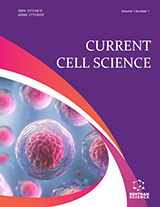
Full text loading...
We use cookies to track usage and preferences.I Understand

Anticancer drug development is becoming complex and demanding because human cancer leads to 12% of global human mortality. Chemical and pharmacological breakthroughs play leading roles in updating drug evaluation and development for different types of tumors.
Chemical and pharmacological breakthroughs manifest in different facets. A large proportion of financial and workload increases in drug discovery must be paid off. In front of complexity, difficulties, and financial increase of drug development, evaluative promotion must go miniature-wise and single-cell-wise. Multi-omics knowledge and technology are greatly expanded and understood in depth. This type of technical trend is suitable for current experimental exploration and clinical occasions. Technical and pharmacologic advances are especially emphasized to address this trend.
Presently, the anticancer pharmaceutical study is multi-faceted and risk-taking. To keep up this momentum, multi-disciplinary drug evaluation, clinical selection, and combination principles should be discovered. Past and futuristic chemical and pharmacological interactions and breakthroughs are discussed.
In summary, the landscape of pharmaceutical investigation should be integrated with chemical and pharmacological knowledge in every facet of drug development and clinical personalization.

Article metrics loading...

Full text loading...
References


Data & Media loading...